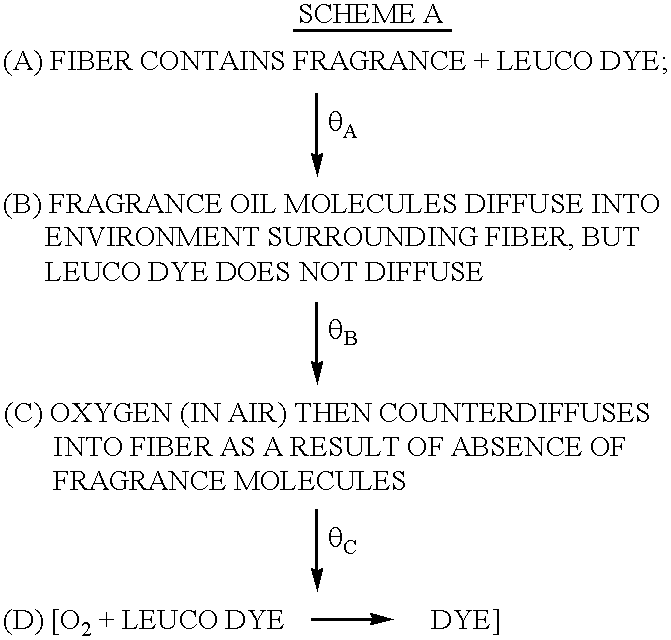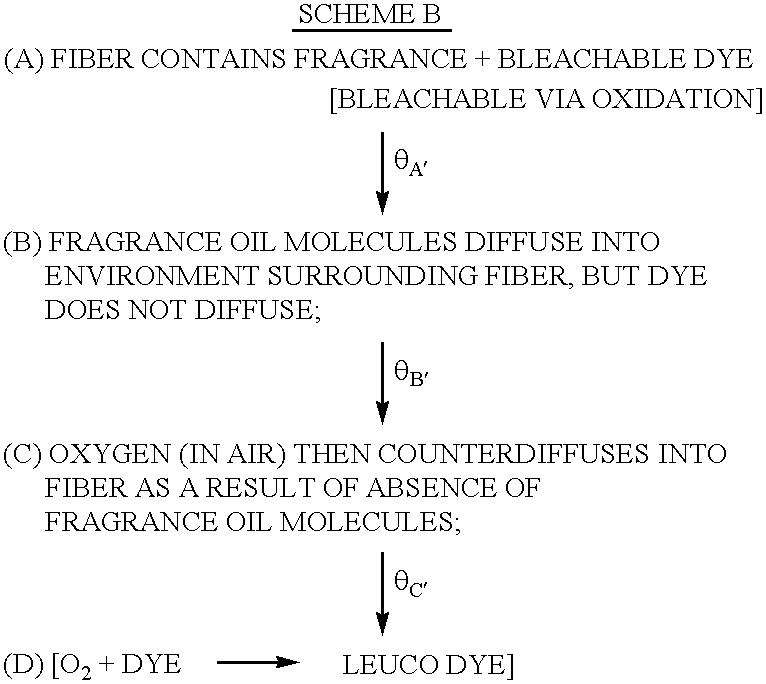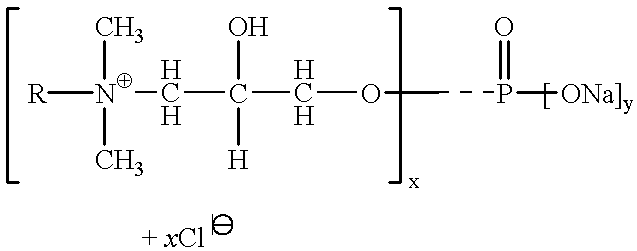Fragrance containing fiber
a fiber and fragrance technology, applied in the field of fragrance-containing fibers, can solve the problems of not disclosing the use of fragranced fibers, not disclosing the incorporation of fragrance materials into such fibers, and not disclosing the polishing or sealing of face layer 6035
- Summary
- Abstract
- Description
- Claims
- Application Information
AI Technical Summary
Benefits of technology
Problems solved by technology
Method used
Image
Examples
example i (
PART B)
PREPARATION OF FRAGRANCE-CONTAINING MICROPOROUS POLYMER PARTICLES
Using the apparatus of U.S. Pat. No. 3,505,432 issued on Apr. 7, 1970 (the specification of which is incorporated herein by reference), 75 lbs of a 50:50 mixture of PCL-700 polyepsilon caprolactone (manufactured by the Union Carbide Corporation of New York, N.Y.) having a melting point of about 180-190.degree. .F:low density polyethylene are heated to about 250.degree. F. 25 Pounds of the fragrance formulation of (Part A) of this Example is then quickly added to the liquefied polymer mixture. 25 Pounds of the antimicrobial substance having the structure: ##STR27##
("triclosan) is then quickly added to the liquefied polymer mixture. The temperature is then raised to about 250.degree. F. and the mixing is effected for 5-15 minutes. The molten polymer, enriched with fragrance and enriched with antimicrobial agent, is then formed into polymer beads or pellets. 50 Pounds of the scent containing "master pellets" are th...
PUM
| Property | Measurement | Unit |
|---|---|---|
| boiling point | aaaaa | aaaaa |
| weight percent | aaaaa | aaaaa |
| temperature | aaaaa | aaaaa |
Abstract
Description
Claims
Application Information
 Login to View More
Login to View More - R&D
- Intellectual Property
- Life Sciences
- Materials
- Tech Scout
- Unparalleled Data Quality
- Higher Quality Content
- 60% Fewer Hallucinations
Browse by: Latest US Patents, China's latest patents, Technical Efficacy Thesaurus, Application Domain, Technology Topic, Popular Technical Reports.
© 2025 PatSnap. All rights reserved.Legal|Privacy policy|Modern Slavery Act Transparency Statement|Sitemap|About US| Contact US: help@patsnap.com



